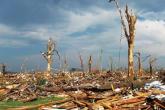Original Research

Perceived Attitudes and Staff Roles of Disaster Management at CBOCs
Community-based outpatient clinics can play an important role in disaster response, but significant barriers exist, which must be addressed.
The Valley Fire has displaced about 13,000 California residents and forced limited operations at the San Francisco VA Health Care System’s Clearlake VA Clinic.
Following 2 days of closures, the Clearlake VA Clinic in California has been reopened for all medical appointments on Wednesday with limited lab service and no blood draws after 12:30 PM.
The Valley Fire broke out over the weekend, burning about 70,000 acres to date. The fire has destroyed 585 homes and claimed at least 1 life—a 72-year-old woman with multiple sclerosis, whom the Lake County Sherriff’s Department said they couldn’t reach before flames engulfed her home.
About 13,000 residents of Lake, Napa, and Sonoma counties have been displaced, some to shelters and unable to return to their communities, either due to continuing fire threat or the devastating consequences of the blaze, including downed power lines and other damaged infrastructure. These victims are now relying on community and government aid for shelter, food, water, cleaning supplies, and support services.
The American Red Cross (ACA) is offering medicines and health services, but any VA patient affected by the wildfire and requiring medication refills should call the Telephone Linked Care line at (800) 733-0502.
During a disaster, CBOCs can play an important role, according to “Perceived Attitudes and Staff Roles of Disaster Management at CBOCs,” written by Hilton and colleagues last month in Federal Practitioner. Whereas some organizations are fully equipped to respond to disasters, such as the National Guard or the ACA, others are not. This study outlined the important role of CBOCs in disaster response but admitted that significant barriers to a successful response exist and must be addressed.
Among the recurrent themes that emerged from the study were emergency preparedness barriers, including lack of staff training, tools, and direction; as well as acknowledgment of limited available resources and personal family fears: many CBOC employees said that during an emergency, they would prefer to be home caring for their families.
The VHA mandates CBOCs develop an emergency preparedness plan. To achieve this, Hilton and colleagues suggest the following:
Additional postdisaster resources, including cleanup efforts and financial relief, are available at https://www.usa.gov/disasters-and-emergencies.

Community-based outpatient clinics can play an important role in disaster response, but significant barriers exist, which must be addressed.
Among other findings, early dialysis was associated with a lower risk of an emergency department visit during the week of the storm and a lower...
This new geographic information system-based tool by HHS could help hospitals, health care coalitions, and emergency medical services plan better...
